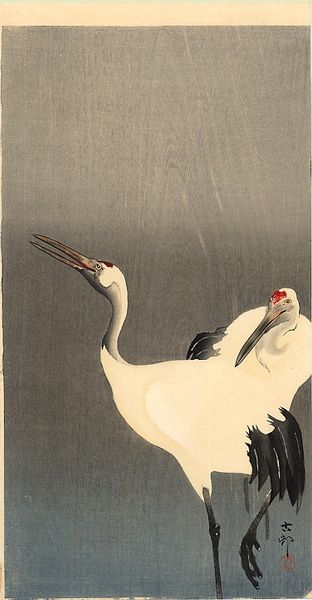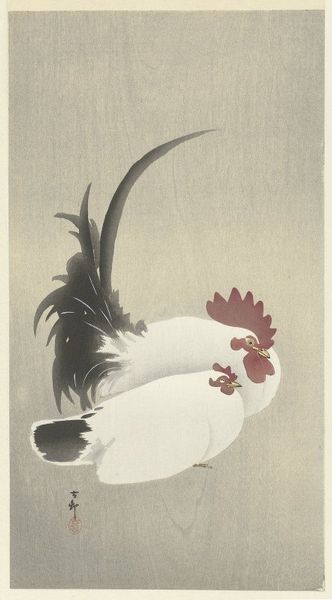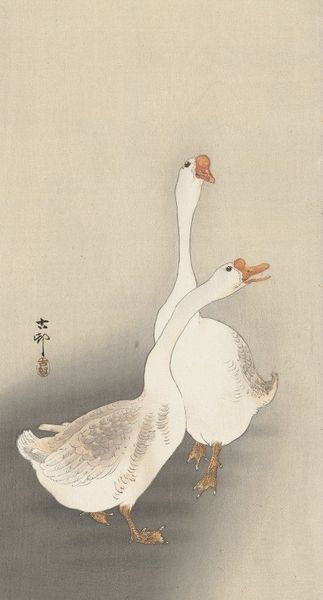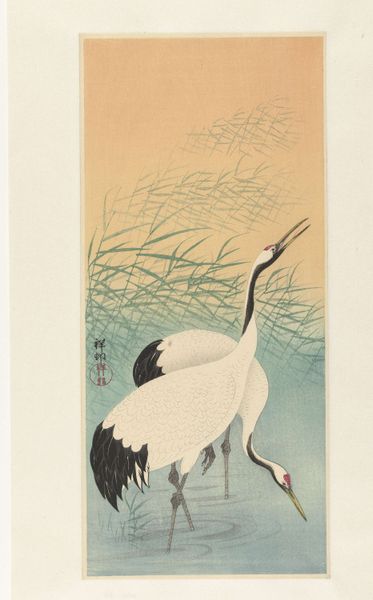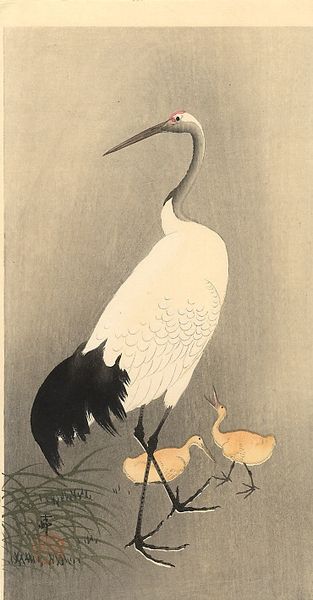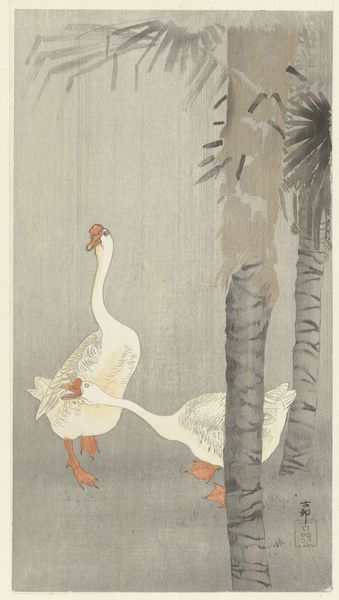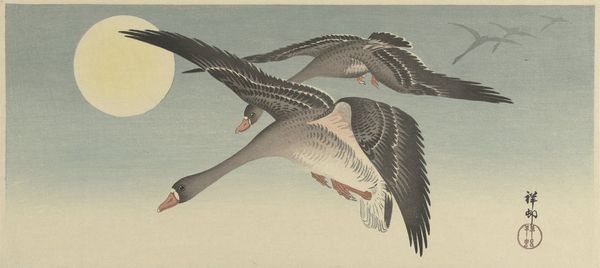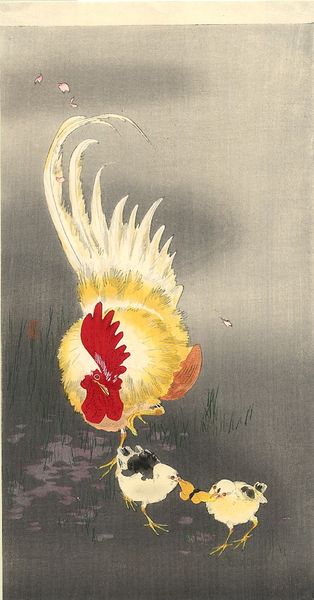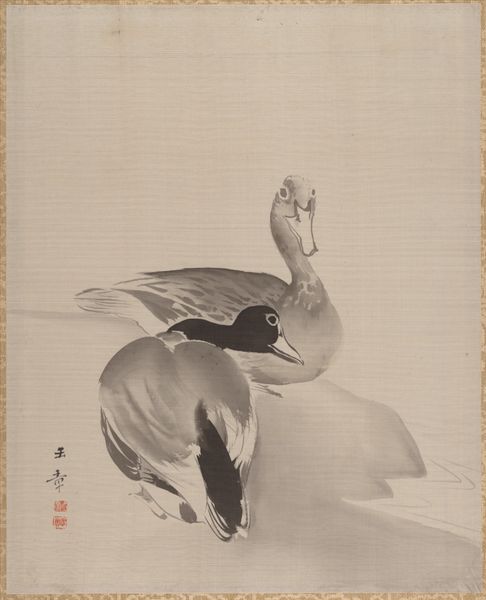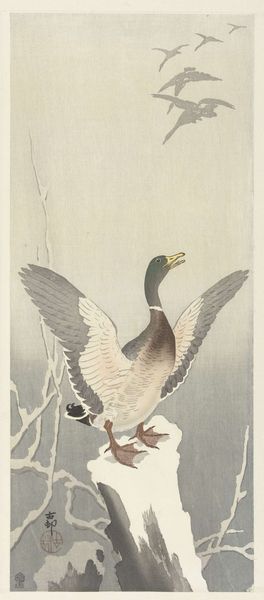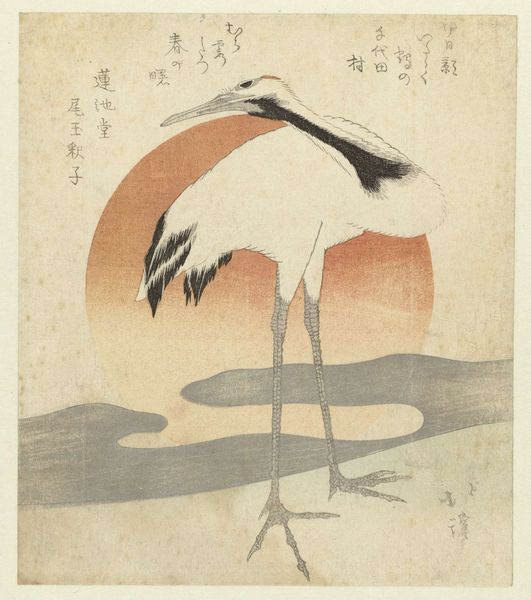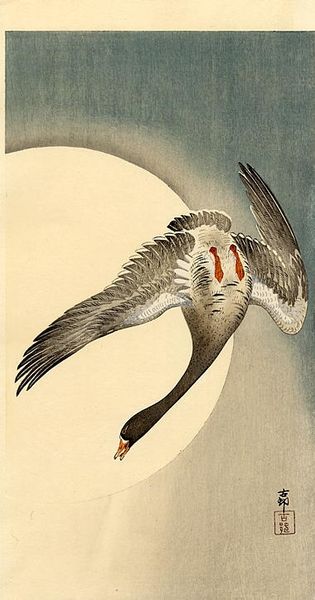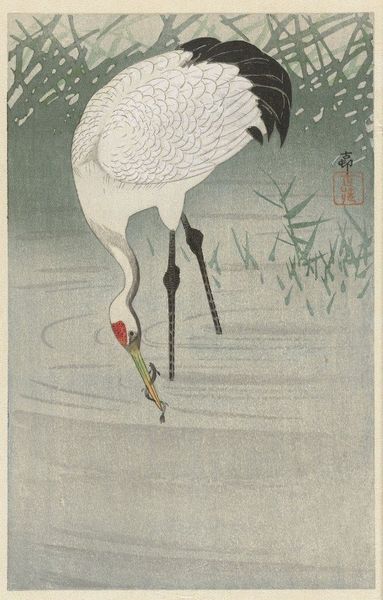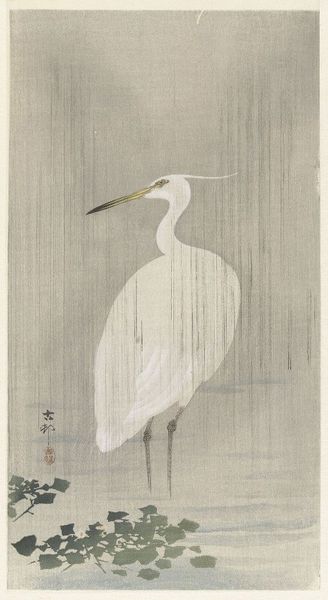
Copyright: Public Domain: Artvee
Editor: Today we're looking at Ohara Koson's "Two Cranes," likely painted between 1900 and 1930 using tempera. It feels so simple and elegant. I’m immediately drawn to the composition – the stark white of the birds against that hazy background. What do you see in this piece? Curator: Indeed. The very essence of this work resides in its formal relationships. Observe how the artist manipulates line to define the forms. The delicate curvature of the cranes' necks is juxtaposed with the sharp angles of their beaks, creating a visual rhythm. Consider, too, the restrained palette. The subtle gradations of grey in the background act as a foil, emphasizing the purity of the white plumage. Does this not suggest a careful orchestration of elements? Editor: Yes, I see that. The contrast between the sharp beaks and the soft necklines creates a dynamic tension, and the muted colors do make the white pop. So you are seeing the stark geometry against the use of natural forms? Curator: Precisely. Furthermore, reflect on the positioning of the two cranes within the pictorial space. They occupy a shallow depth, almost flattening the image. This deliberate reduction of spatial illusion underscores the two-dimensional nature of the work. Does this resonate with similar formal choices in other Ukiyo-e prints that you know? Editor: Now that you mention it, yes, there's definitely a similarity to other Ukiyo-e prints in how they flatten space. Thank you; seeing how form and technique converge helps me see it with fresh eyes. Curator: My pleasure. It is in deciphering these relationships, their calculated geometry, and surface articulations that the artwork reveals its meaning and its impact. I think we are just scratching the surface ourselves.
Comments
No comments
Be the first to comment and join the conversation on the ultimate creative platform.
